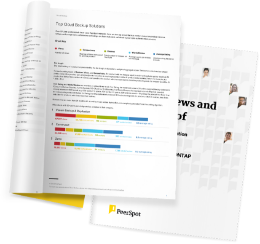Can function as an ESB along with the core product, with decent integration of message protocolsI have noticed that webMethods ActiveTransfer has had problems when handling large files. For example, when we receive (and perform operations on) files that are larger than about 16 MB, the software starts losing performance. This is why, for most customers who have to deal with big files, I suggest that they use a product other than ActiveTransfer. I would like to note that this problem mainly concerns large files that undergo extra operations, such assigning, unassigning, or file translation. When these operations take place on large files, ActiveTransfer will use up a lot of resources. Within the product itself, I also believe that there is room for improvement in terms of optimization when it comes to general performance. I suspect that the issues underlying poor optimization are because it is all developed in Java. That is, all the objects and functions that are used need to be better organized, especially when it comes to big files but also overall. webMethods ActiveTransfer was born as an ESB to handle messages, and these messages were typically very short, i.e. small in size. A message is data that you have to send to an application, where it must be received in real-time and possibly processed or acknowledged elsewhere in the system as well. So, because it was initially designed for small messages, it struggles with performance when presented with very large files. All this to say, I suggest that they have an engineer reevaluate the architecture of the product in order to consider cases where large files are sent, and not only small ones. As for new features, compared to other products in the market, I think Software AG should be more up to date when it comes to extra protocol support, especially those protocols that other solutions have included in their products by default. Whenever we need to add an unsupported protocol, we have to go through the effort of custom development in order to work with it. Also, all the banks are obligated to migrate to the new standards, and big companies are all handling translations and operating their libraries with the new protocol formats. But webMethods ActiveTransfer doesn't seem to be keeping up with this evolution. Thus, they should aim to be more compliant in future, along the lines of their competitors such as IBM and Primeur.





